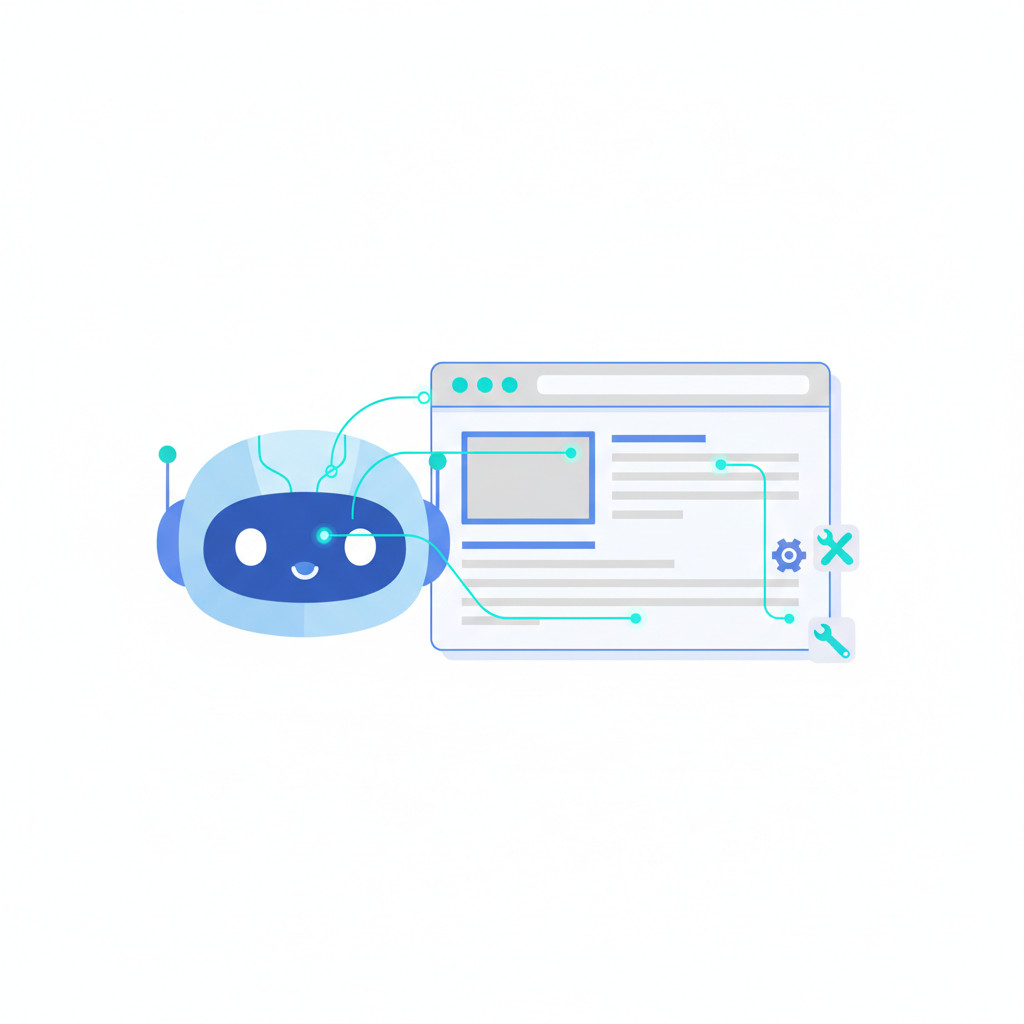AI-Powered Website Troubleshooting and Optimization for WooCommerce Stores
AI-powered website troubleshooting and optimization is transforming how WooCommerce stores run online.
Because slow pages and hidden errors cost sales, fixing them fast matters.
However, manual debugging takes time and often misses root causes.
Therefore automated AI tools that detect errors, apply safe fixes, and tune performance are a game changer.
At Velocity Plugins we focus on WooCommerce speed and reliability.
As a result, AI-driven optimizers increase mobile PageSpeed and improve conversions.
They use logs and HTTP status signals to find 403 and 500 errors automatically.
Therefore you get safer, faster stores with fewer manual checks and no added fees.
This AI troubleshooter can apply automatic fixes in real time, reducing downtime.
For example, early adopters report faster load times and higher PageSpeed scores.
Moreover, built-in backups and a success specialist team handle the rare cases when fixes fail.
Therefore your WooCommerce store keeps converting customers with less effort.
Get started today.
Benefits of AI-powered website troubleshooting and optimization
AI-powered website troubleshooting and optimization delivers fast wins for WooCommerce stores. Because downtime and slow pages hurt conversions, these tools matter. They work continuously to detect issues and apply fixes with minimal input.
- Increased site efficiency: AI-driven optimization tunes caching, assets, and server settings automatically. As a result, pages load faster and server load drops.
- Enhanced user experience: Automated performance improvements boost mobile and desktop PageSpeed scores. See Google PageSpeed for measuring results: Google PageSpeed Insights.
- Reduced downtime: Automated issue detection flags 403 and 500 errors and applies safe fixes in real time. Therefore your store stays available more consistently.
- Faster debugging and lower maintenance costs: AI troubleshooter analyzes logs and chooses fixes. As a result, teams spend less time on manual debugging.
- Data-driven tuning and continuous improvement: The system runs frequent PageSpeed checks and learns from outcomes. Moreover, it compares AI models to pick faster, accurate options.
- Safer changes and fallback options: Optimizations include backups and revert paths to avoid loss. For accessibility and best practices, follow W3C guidance and WordPress optimization tips.
Together these benefits drive website performance improvement and higher conversion rates. Therefore adopting AI-driven tools helps WooCommerce merchants scale with confidence. Start by testing AI optimizers on a staging site, then roll out safely.

Common challenges in website troubleshooting and how AI addresses them
Websites face recurring issues that hurt conversions and brand trust. Slow load times frustrate visitors and increase bounce rates. Frequent crashes or 500 errors interrupt checkout flows. Poor user experience reduces lifetime customer value and search rankings. Therefore teams need reliable, fast solutions that scale.
Typical challenges
- Slow page load times due to unoptimized images, caching issues, or heavy third party scripts. For example, mobile speed often lags behind desktop.
- Intermittent errors such as 403 and 500 status codes that block users and harm SEO.
- Degraded user experience from layout shifts, long time to interactive, and blocking resources.
- High maintenance overhead when engineers chase logs instead of strategic work.
How AI addresses these problems
AI troubleshooting tools provide real-time monitoring and automated issue detection. As a result, systems alert teams the moment HTTP statuses spike and common faults appear. Moreover AI can triage logs, prioritize fixes, and apply safe changes automatically. For background on measuring results, check Google PageSpeed.
Predictive maintenance reduces surprises by spotting patterns before outages occur. For example, AI models find growth in error rates and recommend proactive patches. AI-driven optimization tunes caching, image delivery, and server settings to improve performance quickly. Hostinger describes similar AI workflows that fix sites automatically.
Finally, these tools free engineers for higher value work. Therefore shops see fewer emergency fixes and a steady improvement in site performance and user experience. For implementation tips, see WordPress optimization guidance.
Comparison: Traditional troubleshooting vs AI-powered website troubleshooting and optimization
| Aspect | Traditional manual troubleshooting | AI-powered website troubleshooting and optimization |
|---|---|---|
| Efficiency | Slow, manual checks and ticket queues | Automated scans and AI-driven optimization for fast fixes |
| Accuracy | Prone to missed root causes and human error | Data-driven diagnostics and higher detection accuracy |
| Cost | Higher labor costs and longer downtime | Lower long-term costs because of automation and scale |
| Scalability | Hard to scale with site growth | Scales automatically across many sites and events |
| Response time | Reactive; fixes happen after failures | Real-time monitoring and automated issue detection |
| Maintenance overhead | Engineers chase logs and repeat tasks | Predictive maintenance reduces routine work |
| User experience | Variable; improvements are ad hoc | Continuous website performance improvement and UX tuning |
| Data insights | Fragmented logs and manual analysis | Centralized logs, trends, and model-driven recommendations |
| Safety and rollback | Riskier manual edits without easy revert | Safe optimizations with backups and revert options |
| Best fit | Small teams with few sites | WooCommerce stores and platforms needing continuous optimization |
Conclusion
AI-powered website troubleshooting and optimization delivers clear gains for WooCommerce stores. Because AI automates detection and fixes, sites run faster and experience less downtime. Moreover, data-driven optimizers improve mobile and desktop PageSpeed scores, which boosts conversions. Therefore teams spend less time firefighting and more time innovating.
Velocity Plugins leads in building premium AI-driven WooCommerce plugins. For example, Velocity Chat provides intelligent product recommendations, conversational shopping, and sales optimization. As a result merchants see higher average order values and better customer engagement. Furthermore Velocity Chat integrates with existing stores for a seamless setup.
Adopting AI troubleshooting tools offers practical benefits. Predictive maintenance reduces surprise outages. Automated issue detection applies safe fixes and reverts when needed. Consequently user experience improves and long-term maintenance costs fall.
Start by testing AI optimizers on staging sites, then roll them into production. If you want better performance and smarter customer interactions, consider AI solutions today. Finally remember that incremental changes compound into major wins over time.
Frequently Asked Questions (FAQs)
What is AI-powered website troubleshooting and optimization?
It uses AI-driven optimization and automated issue detection to find and fix website faults. The system watches logs and HTTP status codes. It applies safe fixes and performance settings automatically. As a result, teams resolve issues faster and reduce downtime.
How do I implement this on my WooCommerce site?
Start on a staging site and enable your AI troubleshooter. Connect monitoring and allow automated scans. Review suggested fixes and enable automatic apply if comfortable. Use backups and revert options before pushing to production. For optimization tips, see WordPress guidance.
Can AI break my site or change behavior unexpectedly?
AI usually applies safe changes and respects backups. If a fix fails, systems revert automatically or alert a success specialist team. Moreover you can limit automatic actions to suggestions only. Therefore risk remains low.
What results can I expect for speed and conversions?
Typical observed gains include a 20% mobile PageSpeed increase and a 10% desktop increase. Predictive maintenance helps prevent outages. Additionally many stores see fewer errors and improved user experience. As a result conversion rates often rise. For measuring performance, check Google PageSpeed.
What are the costs and expected ROI?
Many hosts include AI troubleshooters in hosting plans at no extra fee. For example some services fix roughly 16,000 websites per month with a 70% success rate. Therefore operational costs fall and ROI improves through higher conversions and less support time. Test on a small subset and measure results.



